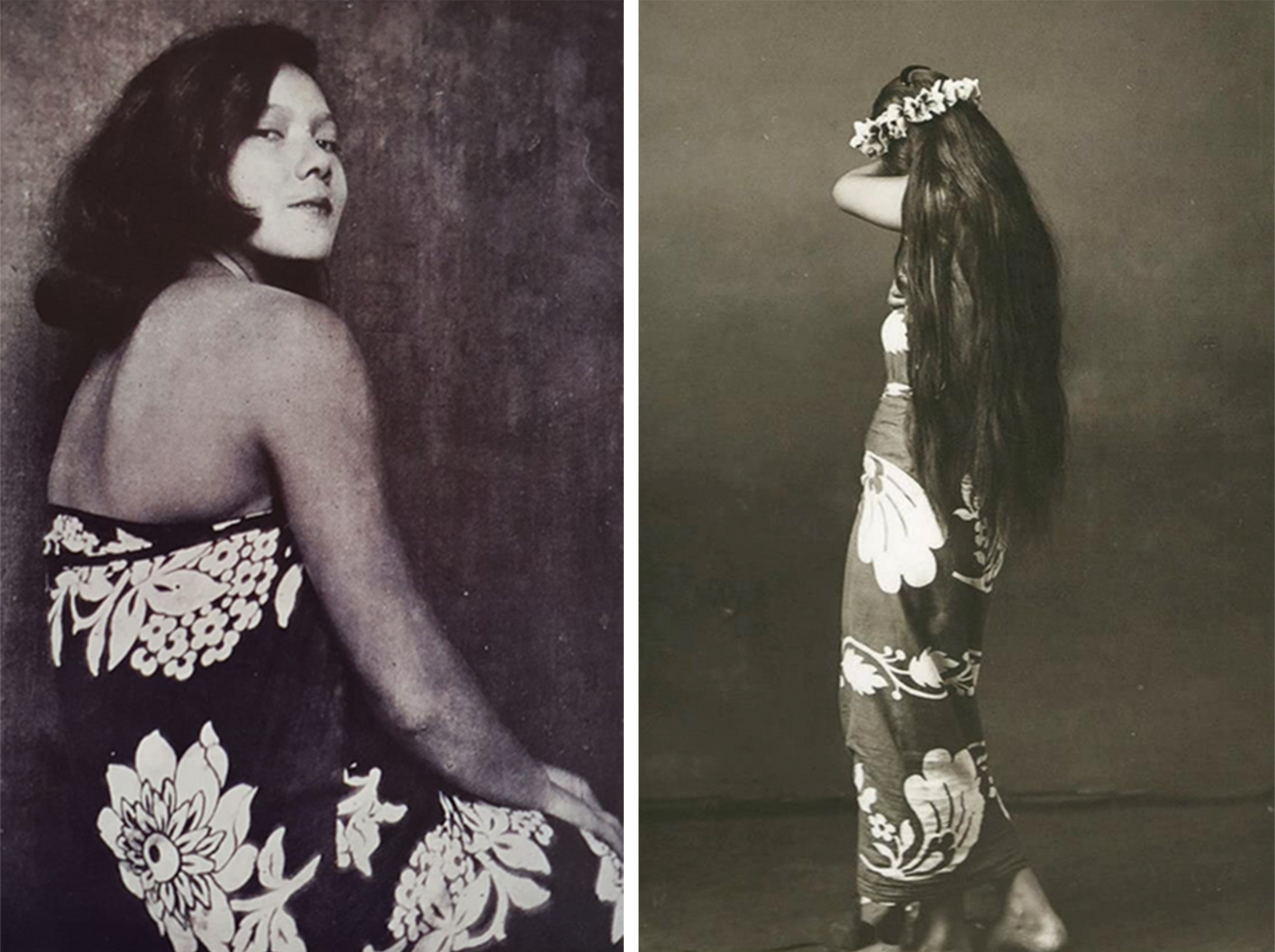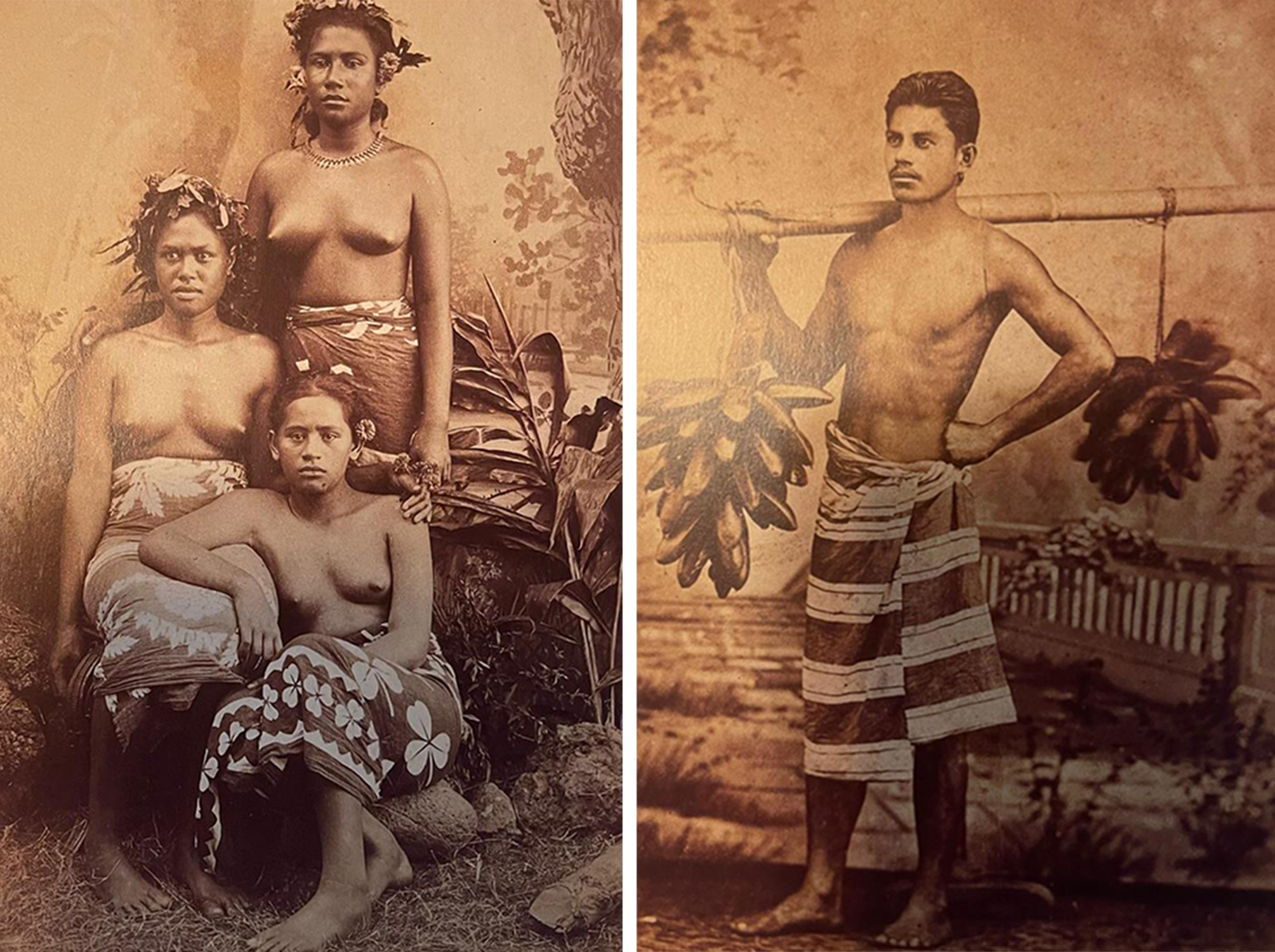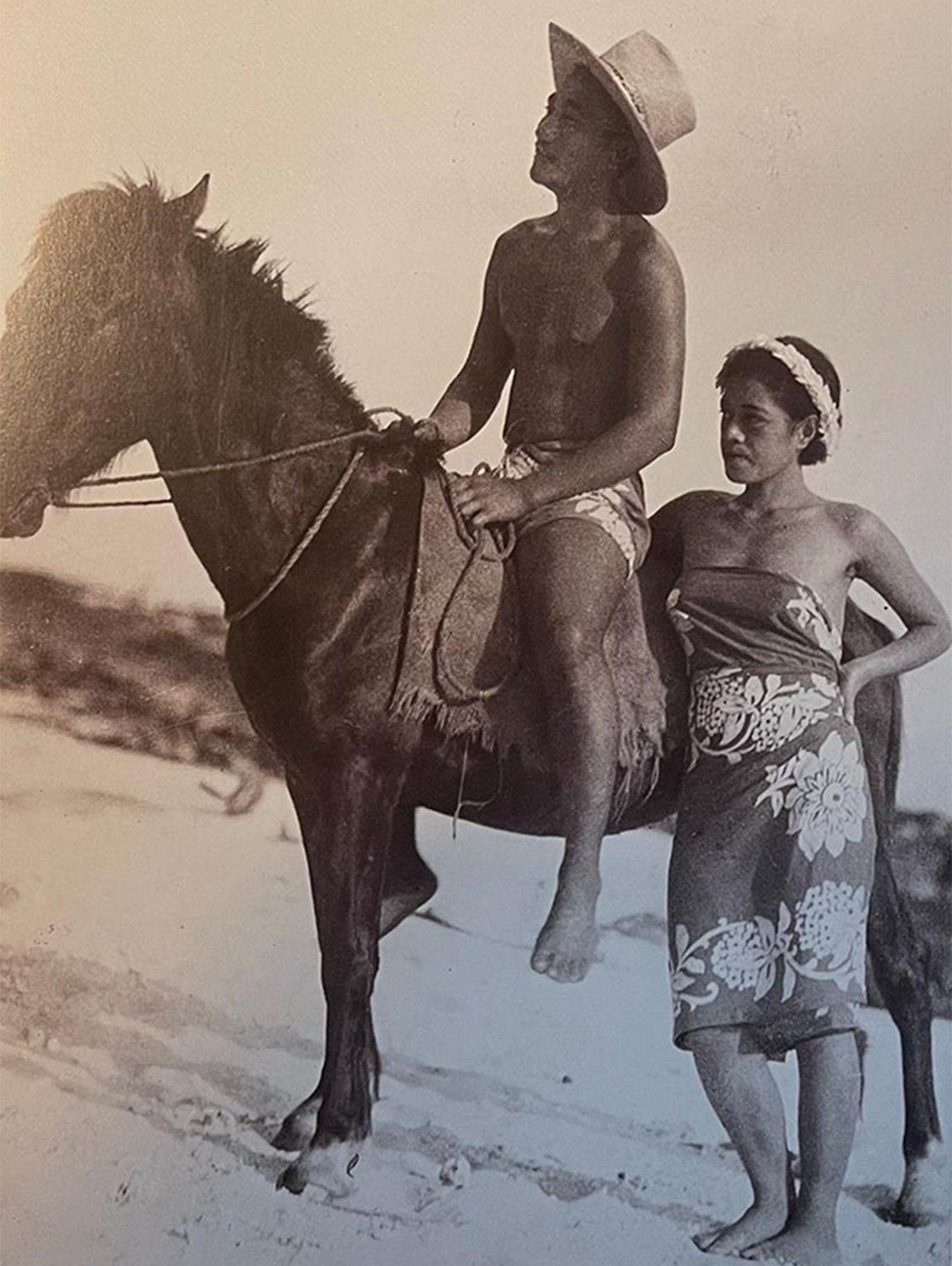The Origins of Pareo

Polynesian essential « par excellence ».
Use it as a wrap, a cover-up, a sexy top, a headscarf, a towel,
or a thin blanket against mosquitoes…
Pāreu (tahitian word for pareo) is undeniably a must-have item under the tropics for women
and men alike since almost for ever. It first came by boat from Western countries and quickly was
integrated in the socio-economical, artistical setting of Polynesia.
Today considered a true symbol of an artistic legacy, the pareu has lived on over 300 years and
was once a symbol of cultural survival. As far back as the first contact between Tahitians and Europeans (1700-1800),
the local garments were made out of beaten bark ‘tapa’. Although barkcloth was more than ordinary
garment for Polynesians, the handy aspect of cotton cloth were obvious. It was easy to wash, to maintain and
pretty comfortable to wear in tropical weather. Flowered printed (ideally) cotton cloth became
soon enough the favorite item to bargain as early as 1769. (Cook 1955:I:118). It was promptly turned
into pāreu (Cook 1955:II:411) or cut out and sticked on barkcloth. Great diversity of garments came along
with the extensive contact with European navigators, English missionaries, Americans whalers and naval ships.
When missionaries expected native people to adopt their clothing style, Tahitians came up with a style of their own.
Women would tie their pāreu like a skirt over their loose and long missionary dress whereas men knotted their pāreu
around the hips underneath their white cotton shirt or either knotted on one shoulder on top of their shirt.

In the late nineteenth century, Tahiti (Papeete) became a commercial hub in the Southern Pacific.
In exchange for coffee, vanilla, copra or sugar, Europeans were trading all sorts of goods
and a massive quantity of cotton cloth so much that other islands could be supplied with pāreu.
Special prints were created for the South Seas Islands according to Constance Cumming*’ s
description (*Scottish traveler and writer who visited Tahiti in 1878):
« …The men all wear pareos of Manchester cotton stuff, prepared expressly for these islands,
and of the most wonderful patterns. Those most in favor are bright crimson with a large white,
arranged on a scarlet ground, or else rows of white crowns, alternating with groups of stars.
A dark-blue ground with circles and crosses in bright yellow, or scarlet with yellow anchors
and circles, also find a great favour; and though they certainly sound ‘loud’
when thus described, they are singularly effective. It is wonderful what a variety of patterns cane
produced, not one which has ever been seen in Europe. » (Cumming 1901:288)
Until today these contrasting combinations of colors of : Red and white, Blue and white, Red and yellow,
Blue and yellow has persisted through Tahitian Culture. Floral patterns became dominant especially hibiscus blossom.
Hawaiians reinforced the cultural radiance when they launched their ‘Aloha shirts’ using the
‘Pāreu’ fabric in the late 1930’s. We can consider the two-tone floral print as a true Polynesian signature print.

The original two-tone floral printed pāreu is not only the best asset under tropics but is foremost an enduring token of the authentic Polynesian spirit, a connection to the natural world and to a more laidback art of living.
Bibliographie: Laura Jones, Artistis Heritage in a changing Pacific, ed. by Philip J.C. Dark and Roger G.Rose. Honolulu: University of Hawaii Press
